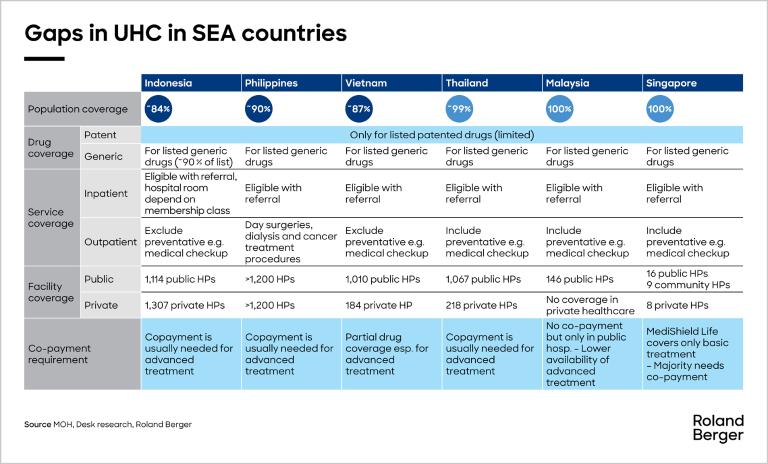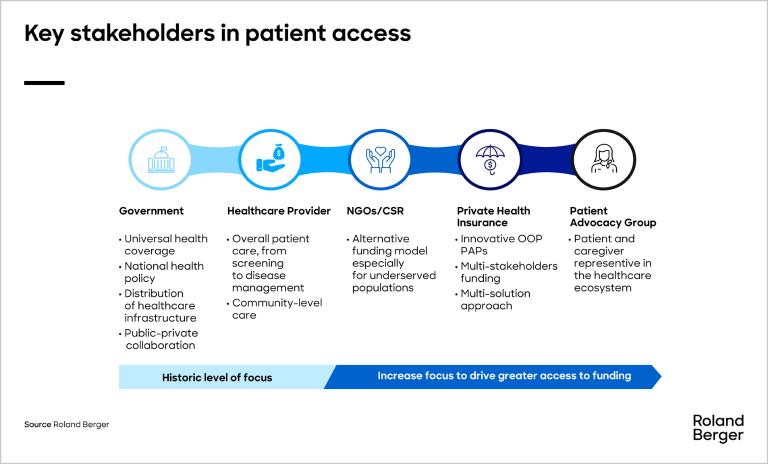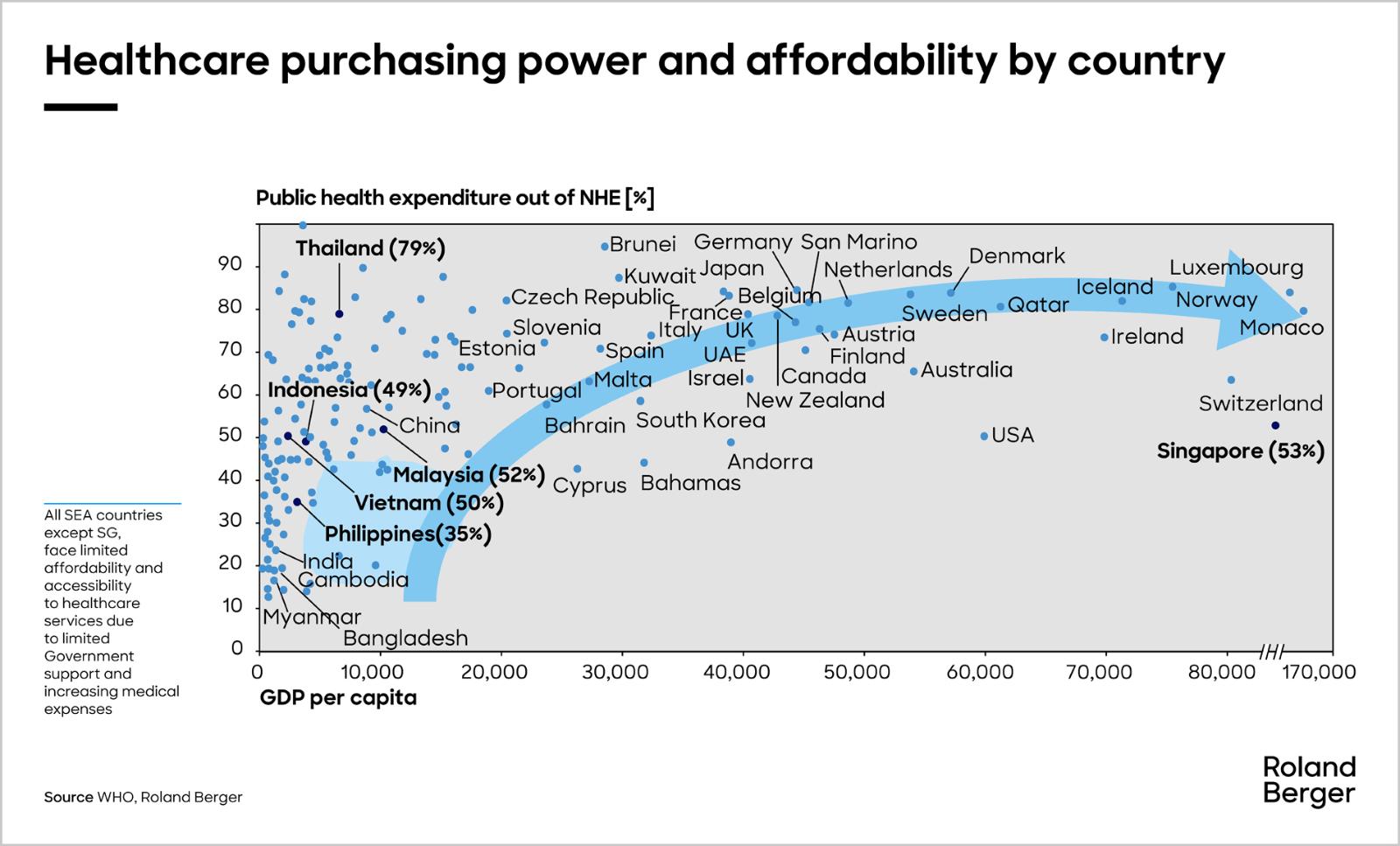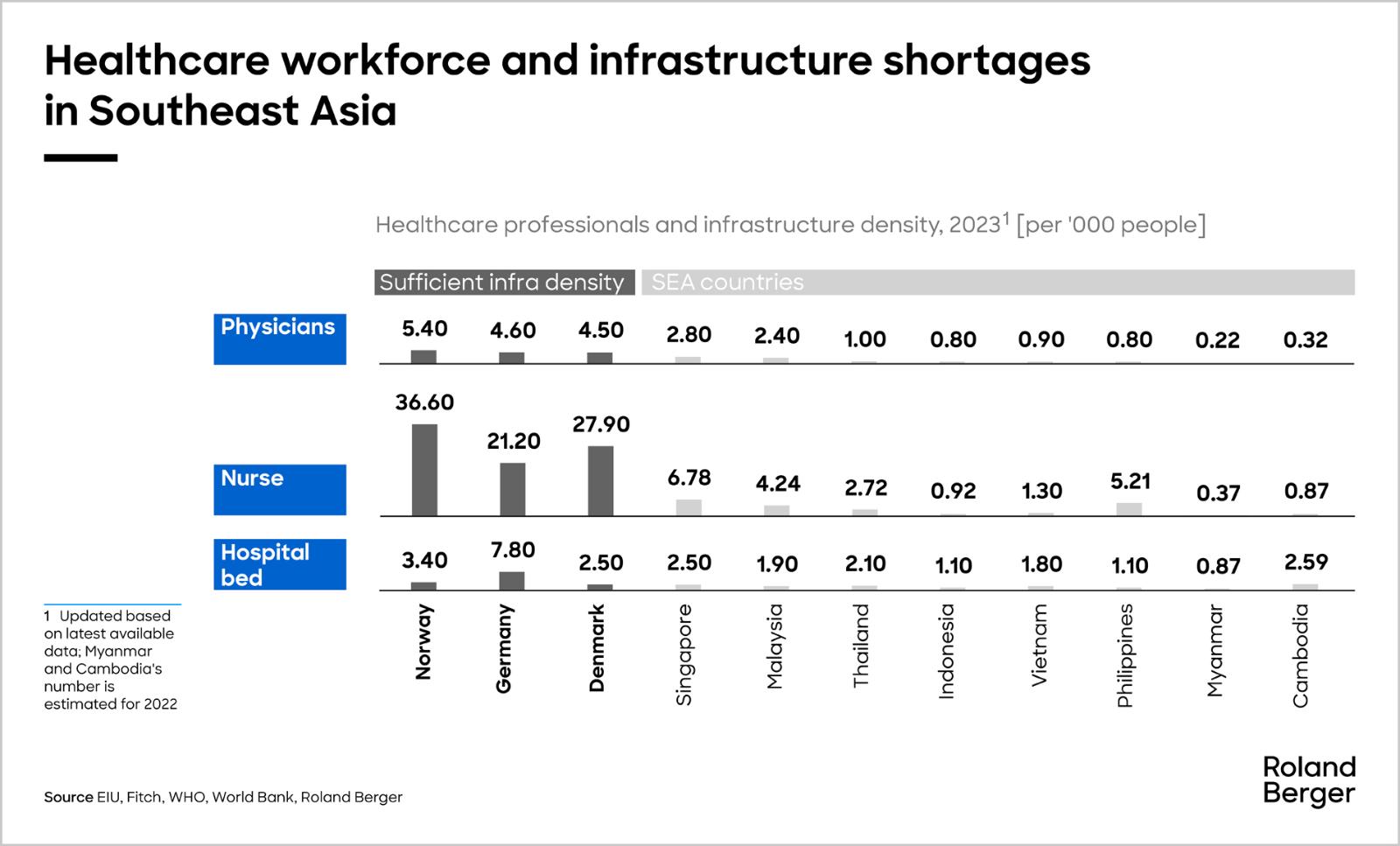

Access for all: removing roadblocks to health
By Yoshihiro Suwa and Aditya Agarwal
Improving patient access in Southeast Asia
"Many MNC pharma companies show growing interest in alternative funding solutions, as they do not anticipate an increase in public funding."
Patient access is at a critical stage, where pharmaceutical companies must act and collaborate with key stakeholders to bridge the gap. Our findings reveal that over 80% of the Southeast Asian population cannot afford advanced medical care, highlighting an urgent need to improve healthcare accessibility across the region. As the demand for improved healthcare services continues to grow, the challenges posed by rising medical inflation rates complicate access for many. In our report, we delve into these challenges and discuss various collaboration models pharmaceutical companies can adopt to effectively reduce barriers to quality healthcare.

Limited healthcare purchasing power and rising medical costs
In Indonesia, Vietnam, and Philippines, public healthcare expenditure accounts for less than 50% of the National Health Expenditure (NHE), largely due to varying government and limited budgets. Singapore stands out among the SEA countries with the highest purchasing power, with a GDP of USD 84,734. Meanwhile, over 40% of the population in Thailand, Phillippines, Indonesia, and Vietnam earn less than USD 5,000 per year.
Inadequate healthcare resources and infrastructure in rural and underserved areas
Healthcare providers are mostly concentrated in the major cities, forcing patients in rural and remote areas to incur high expenses, such as lost income, travel and accommodation fees, and caregiver costs, to receive appropriate treatment.
Additionally, SEA countries face a shortage of physicians, nurses, and specialists, which hinders their ability to meet the population's needs.
High barriers to achieving equal access to Universal Health Coverage (UHC)
In SEA, the UHC index has seen notable progress, increasing from an average score of 58 in 2010 to 67 in 2021. Thailand demonstrated the most significant improvement, with its score rising from 68 to 82. This is largely driven by their National Health Security Act, which provides coverage to all Thai citizens not insured in other health insurance schemes.
However, there are gaps in the coverage of certain treatments and drugs, resulting in remote populations often needing to incur out-of-pocket expenses for timely and better health services at private facilities.

Collaboration between key healthcare stakeholders and pharmaceutical companies to improve patient access
"Pharmacos are now having an opportunity to institutionalize access solutions with the growth of the private ecosystem of integrated players, insurers and health tech, and launch scalable funding models."
To bridge the gaps in healthcare access, strategic partnerships must be made between key healthcare stakeholders and pharmaceutical companies. The key stakeholders are:
Government
The Government needs to shape national health policy, expand infrastructure, promote public-private collaboration, and ultimately provide universal healthcare coverage. For new or non-priority diseases, improving awareness and accessibility to treatments is crucial, which is where the Government can contribute the most.
Healthcare providers
Healthcare providers (hospitals and clinics) are accountable for patient care, which covers a wide range of responsibilities. Healthcare delivery is structured at primary, secondary, and tertiary care levels, each with distinct roles. Primary care focuses on raising health awareness, screening, and treatment of simple symptoms, whereas secondary and tertiary care hospitals focus on more advanced diagnosis and treatments.
Non-governmental organisations (NGOs)
NGOs serve as a bridge between the underserved patient populations and key healthcare funders, whether public or private. Supported by community-level organizations, NGOs have strong access to these populations and a good understanding of their key challenges in healthcare and financing.
Private Health Insurance (PHI)
By offering comprehensive coverage options, PHI can minimize patients' out-of-pocket expenses, thereby enhancing affordability and financial protection. This improves access to necessary medical services and promotes better health outcomes by ensuring that patients can afford continuous and timely care.
Patient Advocacy Group (PAG)
In terms of patient access, PAG’s role is mainly to communicate patients' and caregivers’ aspirations to healthcare stakeholders, including pharma companies, policy-makers, healthcare providers, and private payers.The key objectives of such engagement are typically to secure treatment access and affordability, seek emotional and financial support, build a community/ecosystem, and ultimately ensure overall patient needs are met.

Pharmaceutical companies can adopt various collaboration models with each key stakeholder to reduce the barriers to quality healthcare. Examples of such collaboration include, but are not limited to, awareness campaigns, research support, and healthcare provider training programs, which are further explored in our report.
Conclusion
Growing medical inflation and cost, high healthcare funding gaps, and inadequate healthcare resources and infrastructure are some of the key challenges today. Patient access is at a pivotal point, citing a clear need for pharmaceutical companies to take action through various initiatives and partnerships to bridge the access gap.
Register now to access the full study and explore how pharma and policy can close the treatment gap. Furthermore, you get regular news and updates directly in your inbox.




